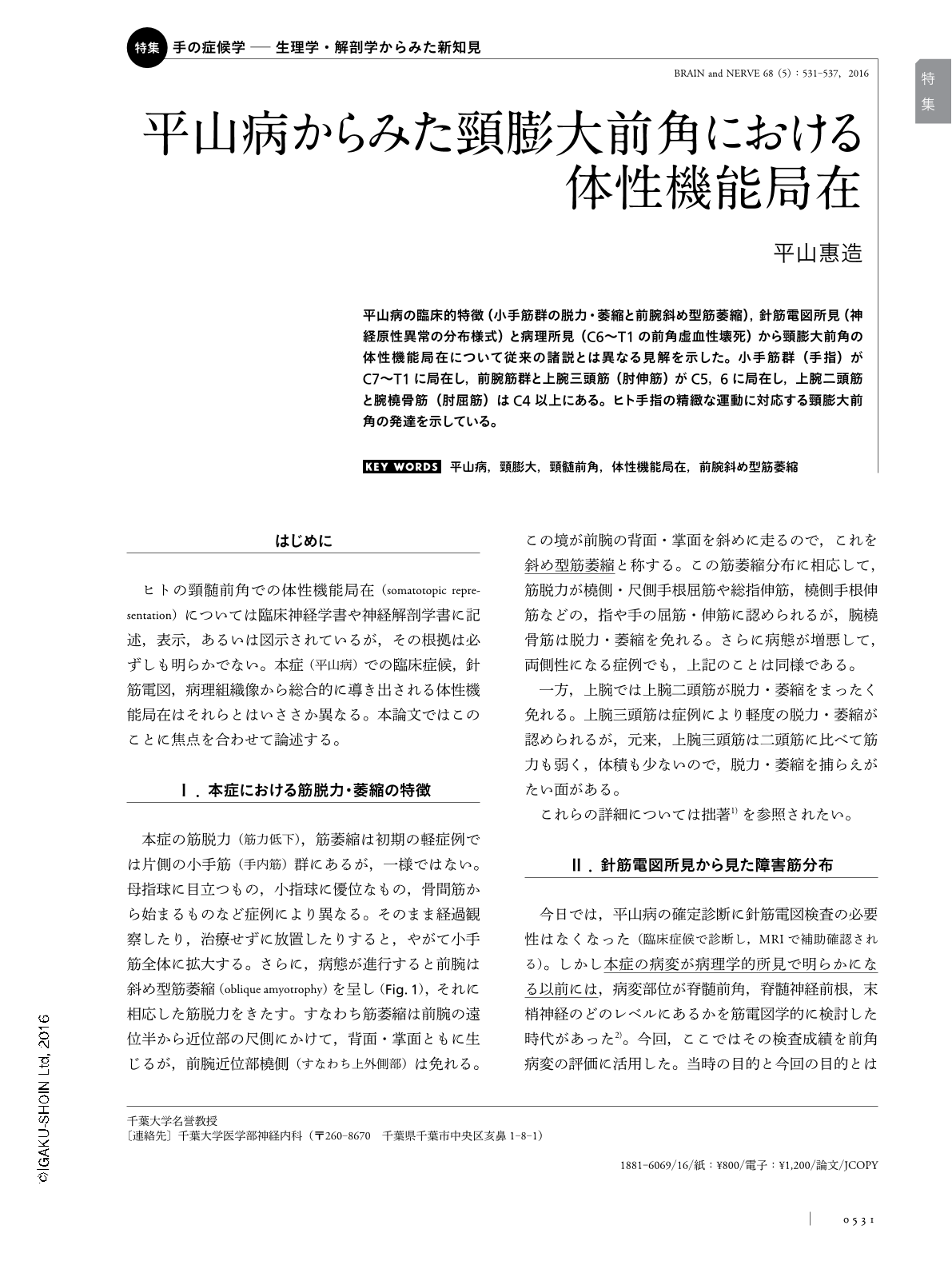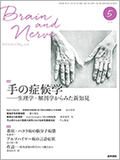Japanese
English
- 有料閲覧
- Abstract 文献概要
- 1ページ目 Look Inside
- 参考文献 Reference
平山病の臨床的特徴(小手筋群の脱力・萎縮と前腕斜め型筋萎縮),針筋電図所見(神経原性異常の分布様式)と病理所見(C6〜T1の前角虚血性壊死)から頸膨大前角の体性機能局在について従来の諸説とは異なる見解を示した。小手筋群(手指)がC7〜T1に局在し,前腕筋群と上腕三頭筋(肘伸筋)がC5,6に局在し,上腕二頭筋と腕橈骨筋(肘屈筋)はC4以上にある。ヒト手指の精緻な運動に対応する頸膨大前角の発達を示している。
Abstract
Clinical features (weakness and amyotrophy of intrinsic hand muscles and obliquely distributed amyotrophy of forearm muscles, figure 1), needle electromyographic findings (distribution of neurogenic activities, figure 2), and pathological findings (ischemic necroses of the anterior horns between C6 and T1, figure 3) of Hirayama disease suggest that understanding of somatotopic representation of the anterior horn innervating arm muscles in the cervical enlargement of spinal cord differs from the known doctrine. Anterior horn cells of the intrinsic hand muscles are located between C7 and T1, those of forearm muscles and triceps brachii muscle as elbow extensor are, contrary to the known doctrine, located in C5 and C6, and those of elbow flexors such as biceps brachii and brachioradialis are located in C4 and above (figure 5). Development of dexterity in human hand may reflect development of cervical enlargement in accord with larger areas representing the hand and fingers on cerebral motor cortex.

Copyright © 2016, Igaku-Shoin Ltd. All rights reserved.


